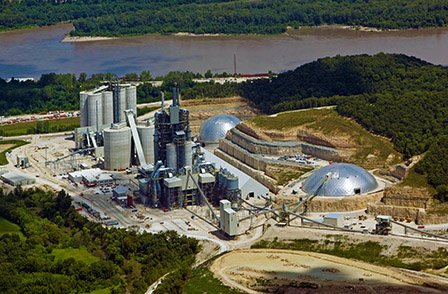Cement Manufacturing Effluent Guidelines

The EPA promulgated the Cement Manufacturing Effluent Guidelines and Standards (40 CFR Part 411) in 1974 and amended the regulation in 1975 and 1977. The regulation covers directA point source that discharges pollutants to waters of the United States, such as streams, lakes, or oceans. and indirectA facility that discharges pollutants to a publicly owned treatment works (municipal sewage treatment plant). dischargers. The Cement Manufacturing Effluent Guidelines and Standards are incorporated into NPDES permits for direct dischargers, and permits or other control mechanisms for indirect dischargers (see Pretreatment Program).
On this page:
- What is the Cement Manufacturing Industry?
- Pollutants and Subcategories
- Rulemaking History
- Additional Information
What is the Cement Manufacturing Industry?
The Cement Manufacturing category covers manufacturers of Portland cement, a hydraulic cement used in the construction industry. The regulation does not cover other types of cement manufacturing.
Portland cement is manufactured in various types to meet different requirements. The basic ingredients of Portland cement are lime (calcium oxide), silica, alumina, and iron. Gypsum is added to adjust the setting time. The components are heated in a kiln, and then ground to produce a fine cement powder. Most of the water used by cement plants is for equipment cooling.
Portland cement manufacturing is included within NAICS group 327310. The NAICS listing is provided as a guide and does not define the coverage of the Cement Manufacturing category. For precise definitions of coverage, see the applicability sections in 40 CFR Part 411.
Pollutants and Subcategories
Regulated Pollutants
- TSS
- Temperature
- pH (abnormally high or low)
Regulation Subcategories
- Nonleaching (kiln dust is not contacted with water as an integral part of the process and water is not used in wet scrubbers to control kiln stack emissions)
- Leaching (kiln dust is contacted with water as an integral part of the process or water is used in wet scrubbers to control kiln stack emissions)
- Materials Storage Piles Runoff
Rulemaking History
1977 Amendment
- Documents, including:
- Final Rule (February 23, 1977)
- Proposed Rule (October 15, 1976)
1975 Amendment
- Documents, including:
- Final Rule (February 11, 1975)
- Proposed Rule (February 20, 1974)
1974 Initial Rulemaking
- Documents, including:
- Final Rule (February 20, 1974)
- Proposed Rule (September 7, 1973)
- Development Document (January 1974)
Additional Information
For additional information regarding Cement Manufacturing Effluent Guidelines, please contact Erica Mason ([email protected]) or 202-566-2502.
